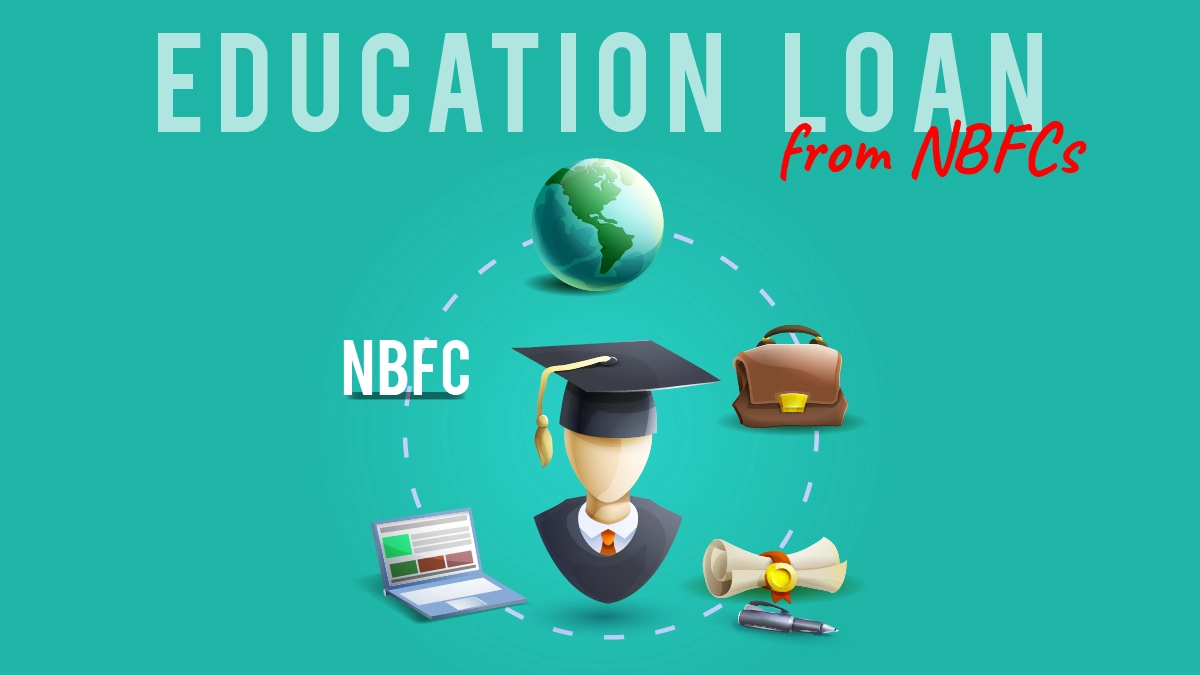https://www.wemakescholars.com/blog/how-to-take-education-loan-from-bank
Abroad Education Loan | Updated

HEST 2025
India's Largest Higher
Education Scholarship Test
Total Scholarships up to 2 Cr
Know more and Apply
Registrations close in
The covid-19 pandemic has stirred the finances of many households. Still, in these difficult times, the cost of quality education has only risen, be it in India or abroad. Parents and students have to turn towards taking student loans and scholarships to fund the shortfall. And taking student loans is one big financial decision we make that lingers with us for years to come.
So, if you are wondering how to take a student loan for your education abroad, you should keep a few things in mind about the different stages of an abroad education loan process.
These stages can be divided into three phases-
- Application processing phase
- Disbursement
- Repayment
Each of these phases takes place over a period of time ranging from two weeks to sometimes for months, depending on the type of education loan you opt for.
But before getting to the points to remember while taking abroad study education loan, you must know the basics of abroad education loans which is, the types of educations loans you can choose to finance your education -
- Collateral education loans - In a collateral education loan, borrowers are required to pledge acceptable collateral security to the lender to take a loan against it for their education. There are about 7 types of collateral security that banks accept for education loans.
- Non-collateral education loans - As the name suggests, a borrower need not pledge any security to obtain an unsecured education loan but rather need a financial co-applicant with a stable income source.
Points to keep in mind while taking student loans
Following are the points to keep in mind before applying for an education loan-
- Check your eligibility - Do you know each time you make an inquiry about any loan, it gets registered to your CIBIL report, and rejections of any loan affect your CIBIL Score.
So if you apply for a non-collateral education loan (where the eligibility criteria for a loan applicant is pretty stringent) and do not meet the requirements, your loan application will be rejected. This rejection lowers your CIBIL score, putting your future loan applications in trouble.
Also Read: Reasons why your education loan is rejected
- Keep all the education loan documents handy - In order to begin the loan process, students must submit specific documents either online or in-person at a bank's branch. Failure to submit the correct and required documents on time will result in the loan being rejected.
Depending on the type of loan taken, there will be additional documents needed. Read our dedicated article on this subject here- Education loan documents required by Private and Government banks.
- Know about education loan terms - When you visit a bank you may get to hear some education loan terms related to the banking sector which you may have never heard of before and may get confused. A few most frequently used ones are collateral margin, loan margin, moratorium period, etc which we've covered in this article below.
Knowing the education loan terminologies can also help you compare the education loan scheme for abroad studies from different lenders.
-
Gap Check - Now gap check is something that almost all lenders check. It means a gap in education (for more than 3 months) has to be justified by writing a letter to the bank or by providing a gap certificate.
For eg- You completed your graduation in April 2018 and now you are going for your master's abroad in April 2022, now the bank will ask you what you did during this time (from April 2018 to April 2022). And so you are required to provide a gap certificate for the same and it is called a gap check.
Why is it crucial to know about Gap checks? Because loan applications have been rejected in the past for not presenting the gap certificate on time.
- Collateral margin - Now if you are opting for a collateral education loan, then the collateral margin is something you need to keep in mind because it plays an important role while the calculation of collateral security for education loans.
It is the margin or the percentage defined by the banks that they consider while granting the education loan to the student. It depends on the course duration of the student. Let’s say, if a bank considers a collateral margin of 20% on immovable property for a one-year duration course, then the respective bank will only offer 80% of the loan amount on the immovable property.
For eg: let’s assume the collateral value of your property is 50 lakhs, and your course duration is of 1 year. The bank will consider 80% of the value for an education loan i.e 40 lakhs.
Some public banks have zero Collateral margins as well, but it may differ for immovable property and liquid securities.
- Loan margin - Loan margin or margin money is the difference between your total expenses for the whole course and how much of your total expenses banks cover. It has an important role to play during the disbursement process.
Most public banks keep a loan margin of a minimum of 10% and cover up to 90% or less of your total expenses for the whole course (depending on the collateral value) and the remaining 10% or more is to be arranged by you. When you pay your portion of the amount to the bank, the bank adds its portion and transfers it to the university/ student.
Some public banks may cover 100% of your total expenses if your university is falling under their prime list. In a non-collateral education loan, you can even get 100% of the loan requirement.
Also Read: Expenses Covered By An Education Loan in India For Study Abroad
- Moratorium periods- A moratorium period consists of your course duration plus 6 months to 12 months where you are not required to pay the interest accumulated to public banks In the case of a non-collateral education loan from private lenders, you need to pay either partial or full interest during your moratorium period.
- Interest Rates - The rate of interest is the most important factor when taking an education loan. You should compare the rate of interest from different lenders that are being offered to you. The rate of interest of different lenders are given below-
-
-
- Public banks - 7.65-9%
- Private banks - 10.5-14 %
- NBFCs - 11-13.5%
- USD lender - 9.25-16% (based on London Interbank Offered Rate(LIBOR) not Marginal Cost of Funds based Lending Rate(MCLR))
-
- Processing fee - The processing fee is another cost to an education loan that one has to pay in order to get the sanction letter. The public banks charge the processing fee of 10k + GST and it is also refundable with some public banks.
The private lenders on the other hand take around 1% or more of the sanctioned loan amount as their processing fee.
- Repayment - One should be aware of the repayment tenure of the lender before taking an education loan. Look for a lender that gives you a longer repayment tenure so that you can pay thin EMIs during the initial period for the least financial burden.
- Processing time - Public banks offer the best education loan term to students but it is just that they take a lot of time to process a student loan. You should never underestimate the time taken by banks and always start early as soon as you get your offer letter from the university.
All of the points mentioned above were some of the most crucial points in the abroad education loan process. We hope that the information provided here will help you plan better, hence facilitating an easy process.
If you are looking for an education loan, reach out to our team of financial officers at WeMakeScholars who will guide and help you with your entire education loan process from loan application to sanction and beyond. And since we are supported by the IT ministry, Government of India, we do not charge anything from the students.




![Education Loan for Working Professionals [Executive MBA] Education Loan for Working Professionals [Executive MBA]](https://www.wemakescholars.com/uploads/blog/Education-Loan-for-working-professionals.webp)
Kindly login to comment and ask your questions about Scholarships & Education Loans